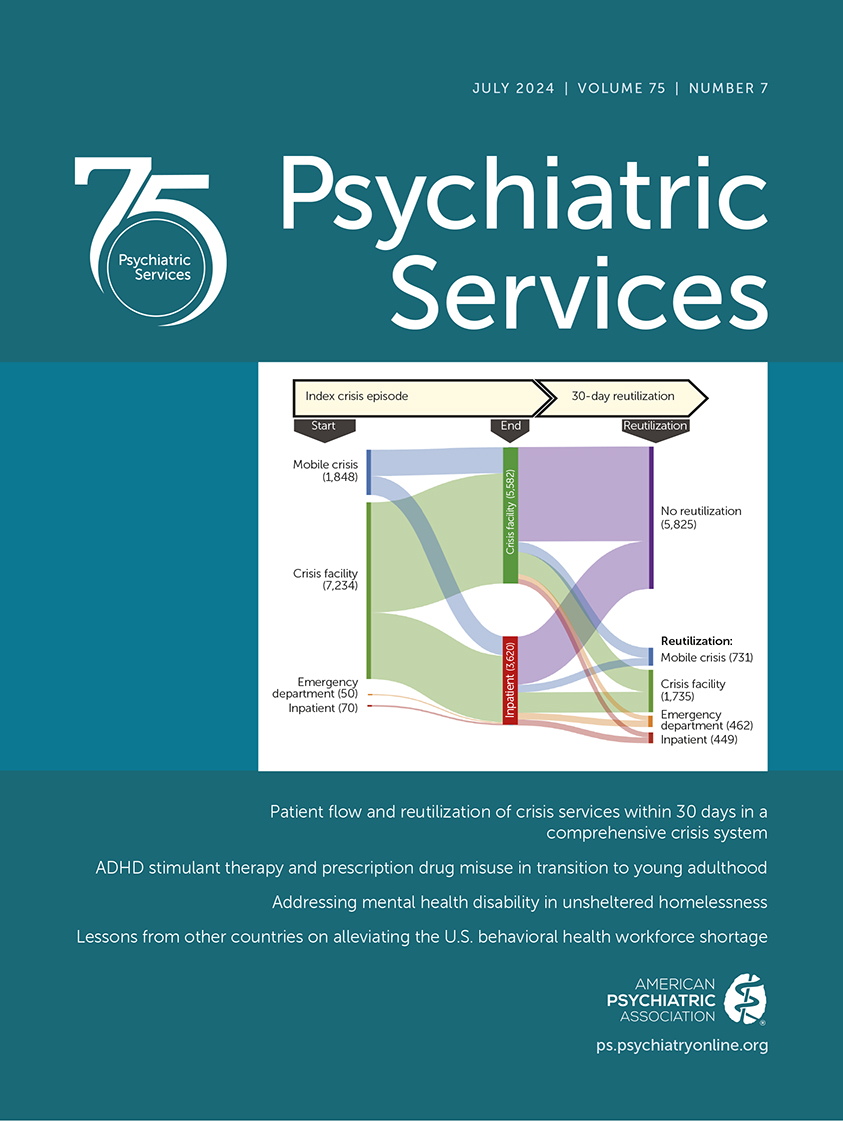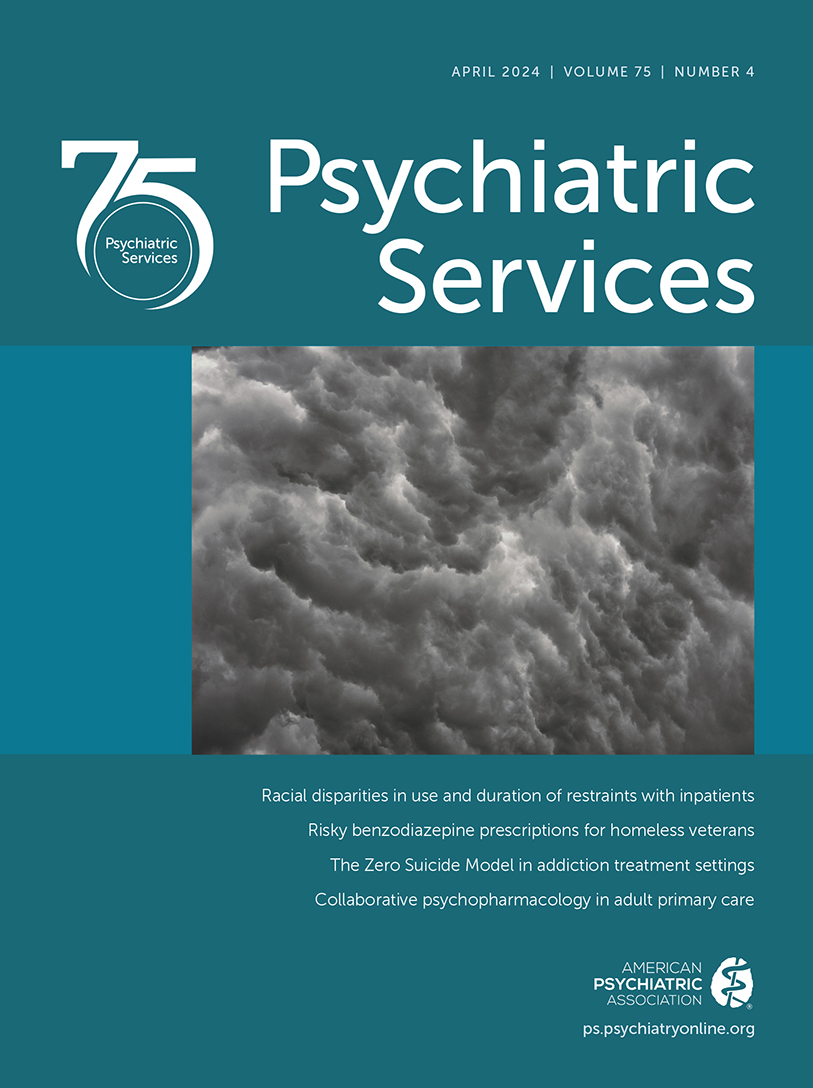Psychiatric Services
- Volume 31
- Number 12
- December 1980
Article
Publication date: 01 December 1980
Pages815–819The orignal intent of community mental health centers was that they would treat the mentally ill. The more than 750 centers now operating are drifting away from that health service, however, toward a social service model offering counseling and crisis ...
https://doi.org/10.1176/ps.31.12.815Publication date: 01 December 1980
Pages819–821With the remodeling of general hospitals as well as the programmatic changes within hospitals, psychiatric units often have to move to a new setting. Such moves have an impact on the attitude and behavior of patients and staff. When two of three ...
https://doi.org/10.1176/ps.31.12.819Publication date: 01 December 1980
Pages822–825In late 1976 the University of British Columbia, working with the provincial health ministry, began an outreach program to rural areas lacking sufficient local psychiatric services. Four teaching hospitals in the province were linked with selected ...
https://doi.org/10.1176/ps.31.12.822Publication date: 01 December 1980
Pages826–828The day treatment program of a community mental health center has evolved from a relatively unstructured drop-in program set up ten years ago to a comprebensive four-part service. The acute day treatment program is able to provide transitional services to ...
https://doi.org/10.1176/ps.31.12.826Publication date: 01 December 1980
Pages829–834Evaluation of an ongoing psychotherapy by a consultant is a demanding and important task. In many cases consultation is best carried out in a hospital setting; the patient benefits by the structured environment, and the therapist gains the support of the ...
https://doi.org/10.1176/ps.31.12.829Publication date: 01 December 1980
Pages834–836A community mental health center established a group lithium clinic to introduce a medical model of treatment for manic-depressive patients and to reduce staff time in caring for these patients. Clinical maintenance consisted of a monthly group meeting ...
https://doi.org/10.1176/ps.31.12.834Publication date: 01 December 1980
Pages837–840The trends toward deinstitutionalization and community care have increased the need for short-term residential programs, and the literature supports their effectiveness as an alternative to longer-term care. The authors describe an innovative short-term ...
https://doi.org/10.1176/ps.31.12.837Publication date: 01 December 1980
Pages841–844Prompted by clinical considerations and increased demands for services, the staff of a day treatment program of a community mental health center set time limits on treatment and adopted a policy of scheduling leaves from treatment. A comparative study of ...
https://doi.org/10.1176/ps.31.12.841Publication date: 01 December 1980
Pages844–847Community Contacts for the Widowed, a self-help group in Toronto, offers individual and group counseling and volunteer work to widows. Beginning as a demonstration project funded by the provincial health ministry, the program became an independent ...
https://doi.org/10.1176/ps.31.12.844Publication date: 01 December 1980
Pages848–850Little research has been done on the use of seclusion in community mental health centers. The authors studied 56 seclusion room placements for 25 inpatients at a community mental health center and found that use of seclusion may more frequently be a ...
https://doi.org/10.1176/ps.31.12.848Past Issues
View Issues Archive
Vol. 75 | No. 7

Vol. 75 | No. 6

Vol. 75 | No. 5
